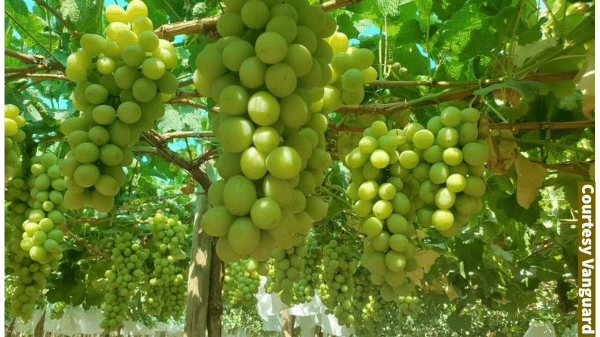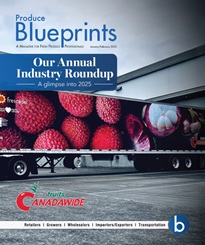In the 2023-2024 campaign, Peru exported 62,745,726 boxes of table grapes (8.2 kilos each), showing a drop of 12 percent compared to the 71,404,349 boxes reported in the previous campaign (2022-2023) and 3.5 percent less than the volume shipped in the 2021-2022 campaign, which reached 64,948,093 boxes, according to Agraria, using information from the Association of Table Grape Producers of Peru (Provid).

In the northern region (Piura, Lambayeque, La Libertad and Áncash) 25,262,464 boxes of table grapes were shipped in the 2023-2024 campaign, registering a contraction of 30 percent compared to the 36 million boxes shipped in the 2022-2023 campaign. Piura exported 20,142,621 boxes, Lambayeque with 2,680,927 boxes, La Libertad with 2,265,787 boxes, and Áncash with 173,129 boxes.
In the case of the southern region (Lima, Ica, Arequipa and Moquegua), 37,483,363 boxes were sent in the 2023-2024 campaign, reflecting an increase of 6 percent compared to the 35.3 million boxes exported in the 2022-2023 campaign.
The Ica region, was the one that grew the most, exporting 35,052,549 boxes. Added to this was the production of Arequipa (1,986,048 boxes), Lima (442,486 boxes) and Moquegua (2,280 boxes).
Provid highlighted that the commissioning of the port of Paracas (Ica) was an important factor for the increase in shipments of table grapes in the south of the country.
“This port infrastructure was improved for the table grape campaign and special services were established for the large volume of exports from the southern zone, especially to Europe,” Provid said.
In terms of markets, the U.S. remained the top destination for table grapes from Peru in the 2023-2024 campaign, as 46 percent of the exported volume of table grapes went to there, totaling 29,035,876 boxes. The second place is maintained by the Netherlands with 7,468,238 boxes, concentrating 12 percent of the total.
The surprise came from Mexico, which was placed as the third destination for Peruvian grapes, displacing China to fourth place. 5,388,812 boxes were exported to Mexico (9 percent of the total) and 4,817,096 boxes (8 percent) were exported to China.
Provid pointed out that it is the first time in the history of Peruvian table grape exports that Mexico imports more Peruvian grapes than China.
“It is not because Mexico has increased consumption of our grapes, but rather shipments to China and other countries have decreased. What’s more, in the previous season the same 5.3 million boxes were exported to Mexico,” they explained.
Between the four mentioned countries, 74 percent of the Peruvian supply was sent. The remaining 26 percent (16,035,803 boxes) were distributed to other destinations. It is worth mentioning that Peru exports grapes to 55 international markets.
Regarding the varietal group, 55 percent of the grapes that were exported were White Seedless (34,468,725 boxes, showing a reduction of 2 percent), 24 percent were Red Seedless (14,827,380 boxes, registering a decrease of 22 percent), 17 percent for Red Globe (10,596,805 boxes, showing a contraction of 25 percent) and 4 percent for Black Seedless (2,805,831 boxes, showing a drop of 8 percent).
According to information from the National Agrarian Health Service (Senasa), despite the weather problems presented, there was slight growth in areas planted with table grapes in the 2023/2024 campaign, reaching 22,343 hectares, that is, 0.8 percent more compared to the 22,164 hectares reported in the 2022/2023 campaign. In the 2021/2022 campaign, 21,100 hectares of table grapes were planted.
By varietal group, the largest area corresponds to White Seedless, which participated with 54 percent of the total, that is, 12,065 hectares (+9 percent). They are followed by Red Seedless with 25 percent of the total (-6 percent); Red Globe with 16 percent (-13 percent) and Black Seedless with 5 percent of the total (+2 percent).
Likewise, with regard to variety, the top 5 in areas is made up of Sweet Globe with 22 percent of the surface (+2 percent), Red Globe with 16 percent (-13 percent), Autumn Crisp with 14 percent (+47 percent), Sheegene 20 or Allison with 7 percent (+4 percent) and Sweet Celebration with 5 percent (-2 percent).



